The Soto WindMaster is a lightweight gas stove that folds down thanks to its detachable 4Flex pot supports. Next to that it has a sublime gas regulation, short boiling times and is very gas efficient.
- Weight: 86,9 grams
- Packsize: 88 mm x 47 mm
- Price: € 84,95/$ 64,95/£ 55,95.
For many years I have been looking at stoves from the Japanese brand Soto. I see them on trade shows, read reviews from others but I was never able to get hold of one in my home country The Netherlands. Until last summer. I was contacted by the website backpackinglight.nl. A Dutch website on … you will have guessed it by now. The guy – Mike – that runs the website asked me If I wanted to review a couple of Soto stoves and this review is the first.
Soto background
As mentioned above; Soto is a brand from Japan. It started in 1978 as Shinfuji Burner of Japan and the company produced industrial burners for weed burning and skilled soldering. The feature that all burners from Shinfuji Burner of Japan shared was that powerful blue flame that works very well in low temperatures. In 1990 Shinfuji Burner of Japan came to market with the Pocket Torch, a product that was also interesting for regular consumers. Soon afterwards the potential of high quality burners that also performed at low temperatures was recognized but it lasted until 2010 that Soto Outdoors was started within the bigger Shinfuji Burner of Japan company.
Size and weight
The Soto WindMaster burner that I am reviewing here has a packed size of 95 mm x 84 mm with the pot supports on the stove and 88 mm x 47 mm without. I put the Soto WindMaster on my precise scale and measured a weight of 60,6 grams for the stove and 26,3 grams for the 4Flex pot supports. In total the Soto WindMaster weighs 86,9 grams. The pouch that comes with the WindMaster puts 11.3 grams on the scale and the printer manual 21,4 grams.
Gas
When reading the manual and the packaging it is clearly stated that the Soto WindMaster needs gas canisters with a gas mix of 70% butane and 30% propane and that the cartridge should be EN417 certified. This kind of limits its use because canisters with a different mix are also available. So I asked Soto and this is – I quote – their response:
“When all combustible stoves are examined by a CE Certifying body, the EN standard requires us manufacturers to list a specific mixture of the gases in our manuals. This is a requirement by law but this does not exclude the use of any gas canisters with any mixtures available in the markets. Our manual states to use 70/30%, Butane and Propane mixture but it does not matter. We are required to list this combination by law. Therefore, our stoves work with any of MSR, Primus, Optimus, JetBoil, Snow Peak, etc. canisters.”
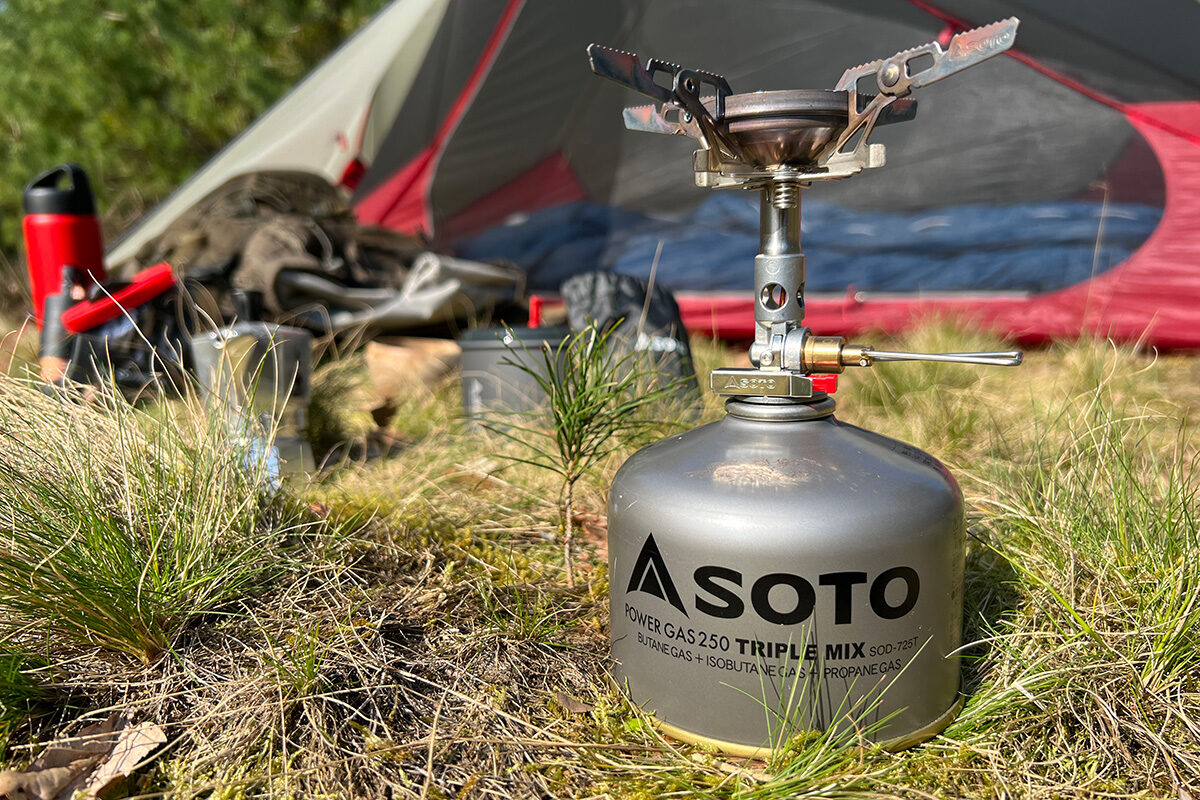
Gas stove
Soto did send me some Soto canisters for the pictures, but they are not available in The Netherlands so I had to test the Soto WindMaster burner with regular gas canisters from Optimus and Primus. Both brands are widely available here in Europe. Primus Summer Gas is with a mix of 80/20 % almost the same as Soto. Optimus is a mix of butane, isobutane and propane. For the performance I did notice any differences.
Setup and potsupports
Connecting the WindMaster to a gas canister is easy: screw it clockwise. A rubber seal prevents gas escaping. Clipping on the pot supports work like a scissor. Squeeze two legs and the 4Flex pot supports open up and you can put them around the burner head. Pretty straightforward. When attached the 4Flex pot supports sit firmly on the stove, but be careful not to lose them. The disadvantage of detachable pot supports. The pot support legs can be folded open to give a wider area to put a pot on. In the folded position the supported area is about 85 mm but when folded open it widens to 143 mm. By the way: a more compact TriFlex three legged pot support is also available.
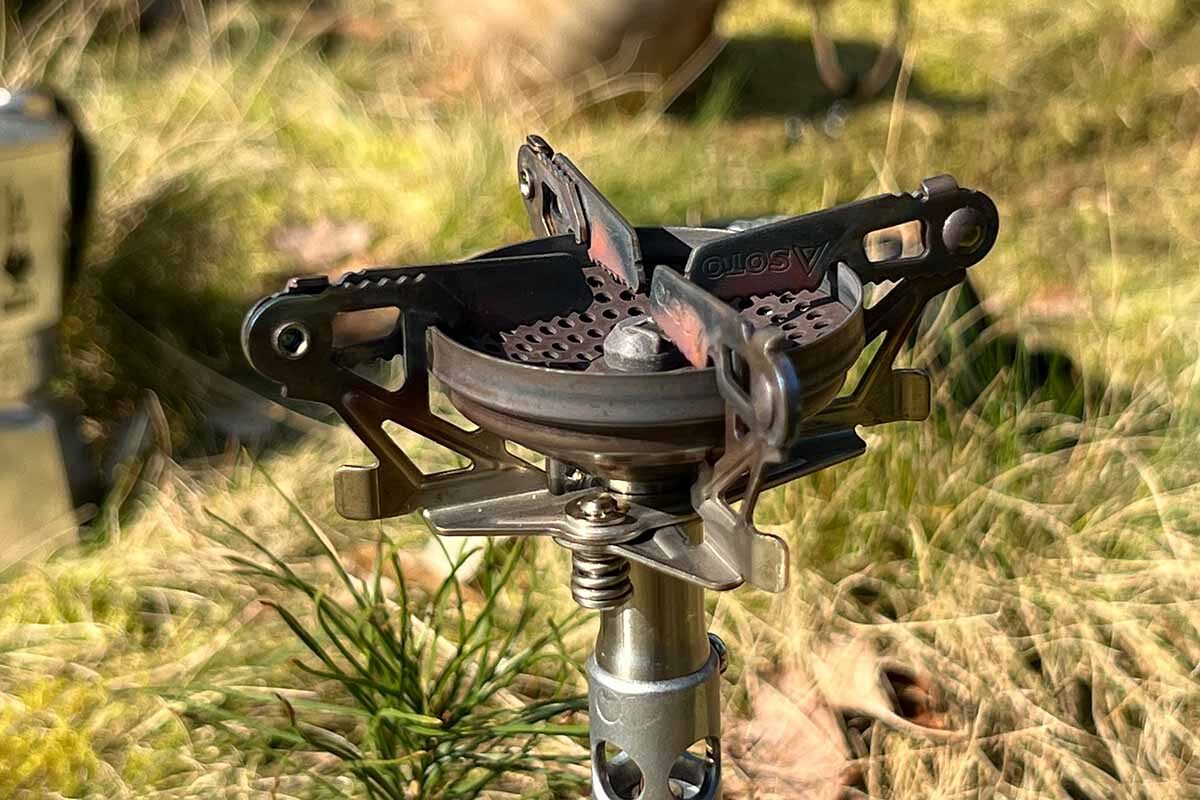
Ignition with Piezo
I do love stoves that come with an integrated Piezo ignitor and the Soto WindMaster has one. A Piezo is a small device that generates a spark when you push a button. Sometimes it can be a lever. The WindMaster has a button. Lighting the burner is simple: turn the regulator counter clockwise, wait until the gas starts to flow, push the Piezo and you are done. In the year that I have been using the WindMaster this never let me down. Nice to know: Soto offers a repair kit for the igniter.
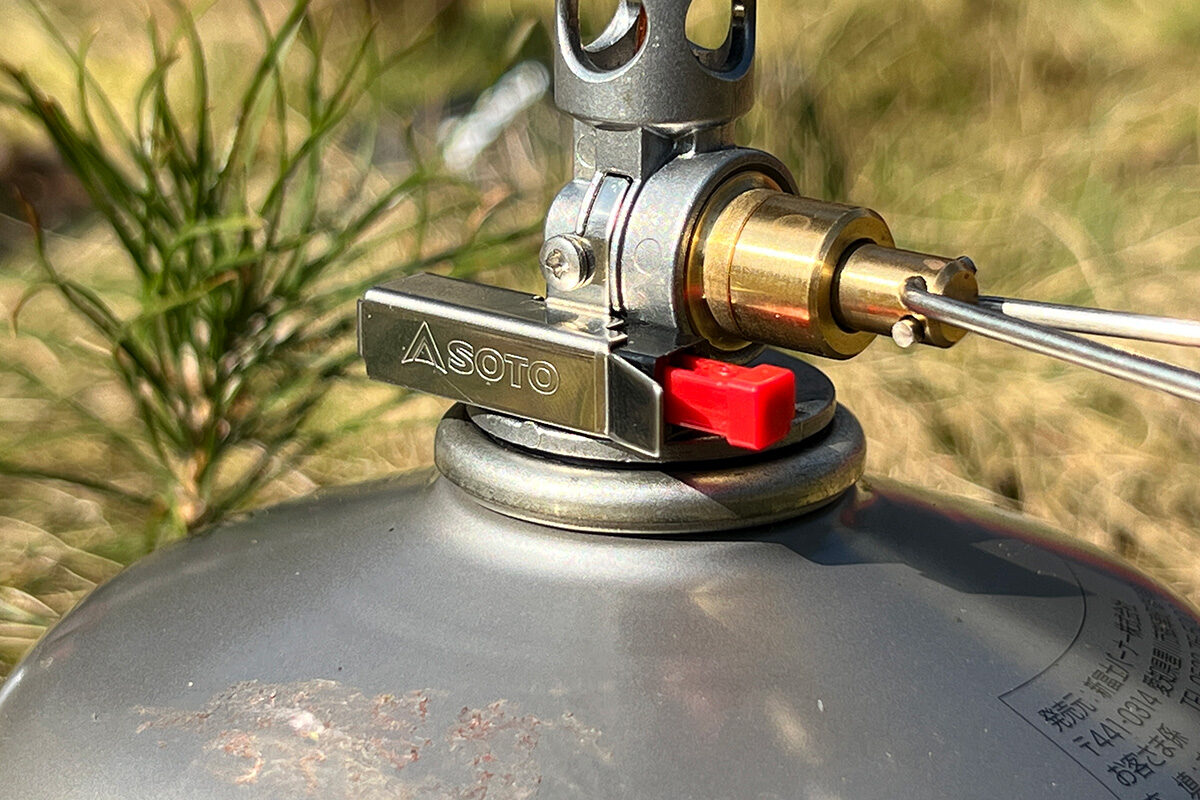
Gas regulation
Key feature of the Soto WindMaster is the gas regulator. Soto calls it the micro regulator and it should work more precisely than most stoves and give a better flame control. Well…. they didn’t lie! The regulator is one of the most pleasant operating regulators that I have used in my outdoor life. The foldable turning knob is big and practical with cold hands and even gloves. From closed to fully open takes turning 810 degrees or 2 and a quarter turns. With this stove simmering is truly possible. The only other stove that does something similar is my trusty – and very old – Primus EtaPower. One thing that I also noticed: the WindMaster is very steady on the gas until the last gas flows out of the canister. That is different to some others that already start performing less while the canister is nowhere near empty.
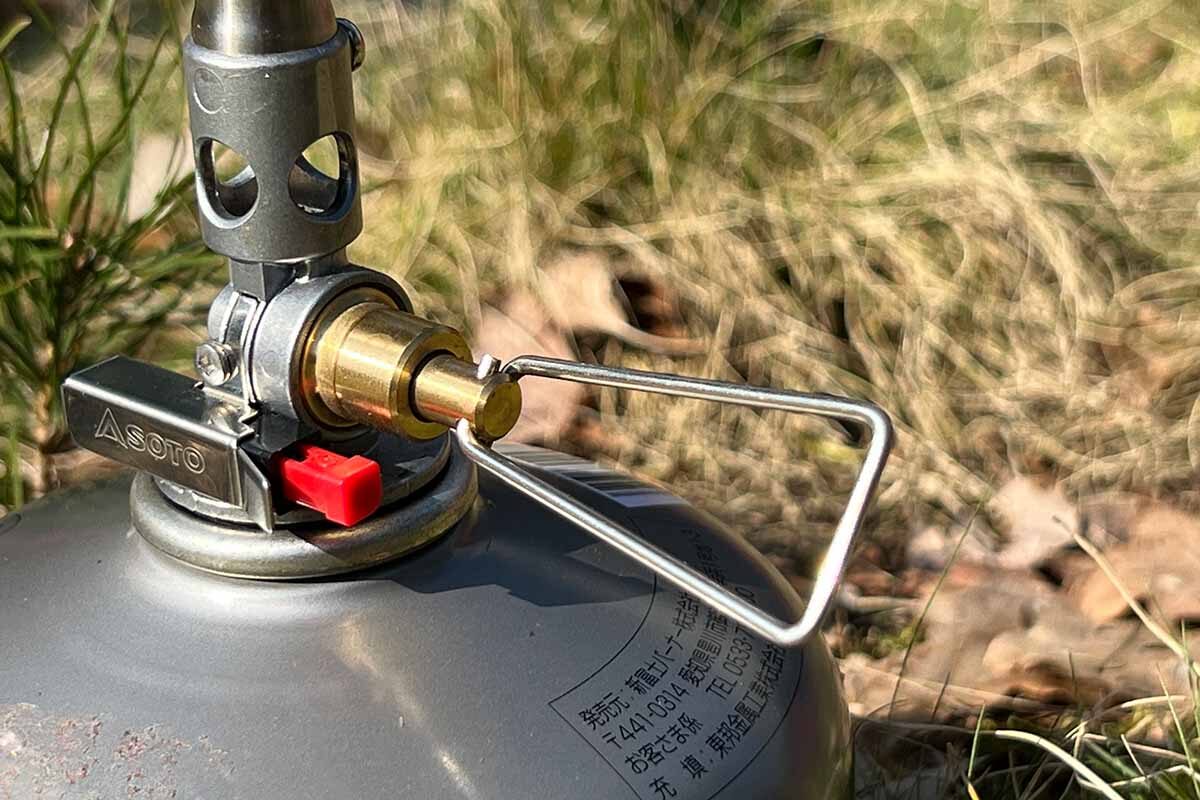
Cooking in practise
The WindMaster stove is not the smallest stove. Maybe I should say it is rather tall. But on a regular 230 grams canister the combo is stable when you put it on the ground. I would advise you to use special extra legs that you connect to the bottom of the canister if you are cooking with larger pots. With small 100 gram canisters I would say these legs are a ‘must’. If you are cooking with small not wide pots – like the Soto New River Pot – it is a bit of a pity that in the folded potsupport configuration, the 4Flex pot supports lack ridges that provide grip. The pot sits rather slippery on top. Folded open, the pot supports have super grippy ridges.
Soto WindMaster and wind
Of course, the name of the Soto should have given me an idea on what should be good on this stove: wind protection. The stupid thing is, at first, I didn’t even notice this. The stove simply performed outstanding when cooking. Even with a lot of wind. The trick is the concave burner head like it is buried in the stove. Next to that: the flame is also shielded from the wind with a sort of high rim. The concave head and the rim together with a low position of the pot on the pot supports, result in very good wind protection.
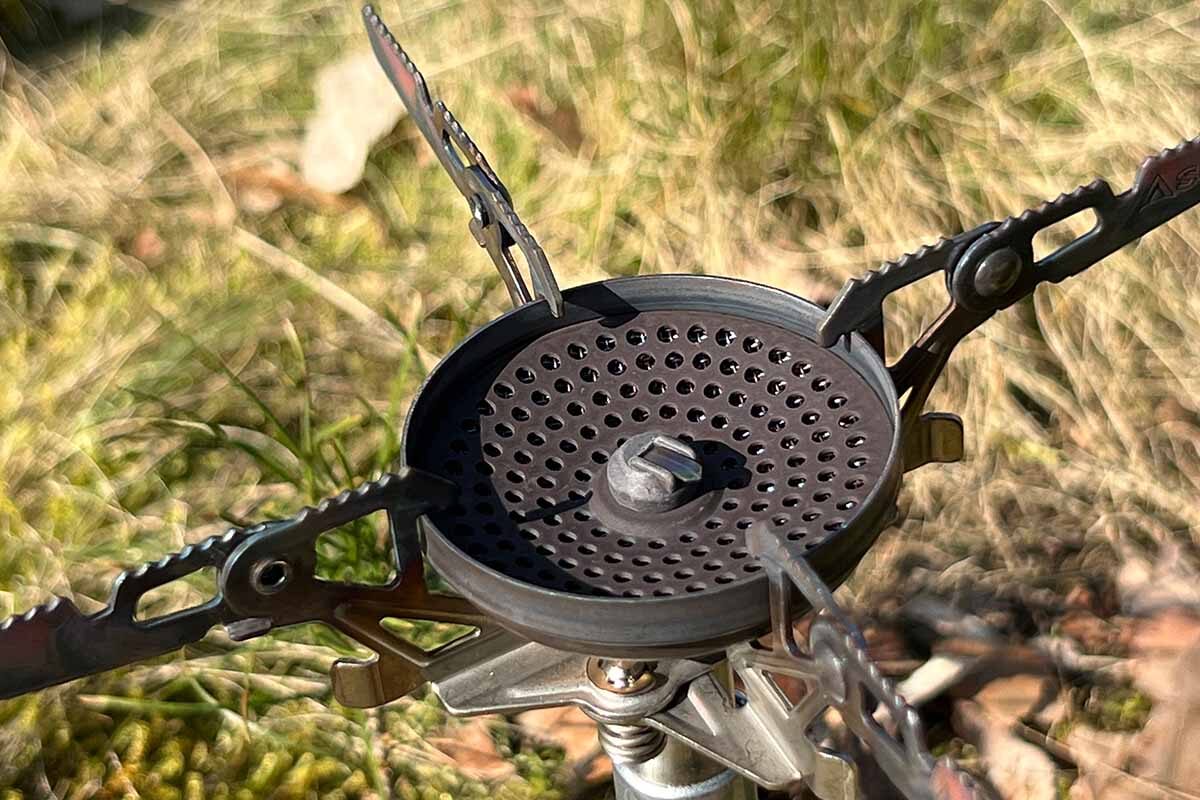
Boiling times
Soto – or better Backpacking Light – was so kind to send me the Soto New River Pots so I could test the stove with a Soto pot. Nice gesture, but I decided differently. The reason: I always test stoves with the same pots to compare boiling times. Next to that I noticed that Soto New River Pot is not very wide and flames started licking around the pot quite easily resulting in a loss of heat and energy.
The pots I used are the pots I mentioned earlier: they came with the Primus EtaPower set. I tested multiple times in my shed, so without wind and a constant temperature. Like mentioned above, I tested with canisters from Soto, Optimus and Primus and I averaged my measurements.
With a regular pot I measured for 1 liter of water at an outside temperature of 20 degrees and a water temperature of 17.1 degrees Celsius, a boiling time of on average 3’45”. That is a bit better than the 4’02” that Soto claims. Changing to a pot with a heat exchanger the boiling time is reduced to 2 min 36 sec and that is absolutely very fast. My suggestion to Soto: start making a pot with a heat exchanger! Gas consumption is on average 9,83 grams for the heat exchanger pot and 12,7 grams for the regular pot and that is pretty efficient.
I also tested with Primus Winter Gas with a gas canister and water at 0 degrees Celsius and the result is pretty amazing. With the regular pot it took me on average 4’01” and 15,9 grams of gas to get 1 liter of water to a rolling boil.
Verdict
The Soto WindMaster is a very well designed gas stove. Its packed size does not give you the smallest stove neither is it the lightest. Nevertheless it is still very packable and lightweight. The detachable pot supports work well and the fact that you can replace them for even smaller 3-legged supports is a nice feature. The Piezo ignition is super. Same for the wind protection the concave burner head gives. Gas regulation is top notch.
The stove is economical in relation to gas consumption – 9,83 grams for 1 liter – and boiling 1 liter water is with a boiling time of 4 min fast. It can be even faster with a pot with a heat exchanger: 2 min 35 sec. One small point of improvement: put ridges on the folded pot supports. All in all the The Soto WindMaster is one of the best stoves I have ever tested and therefore I rate it at 8,8 out of 10 total. The Soto WindMaster retails for € 84,95/$ 64,95/£ 55,95.
Information
The Netherlands: www.backpackinglight.nl
International: www.sotooutdoors.com
